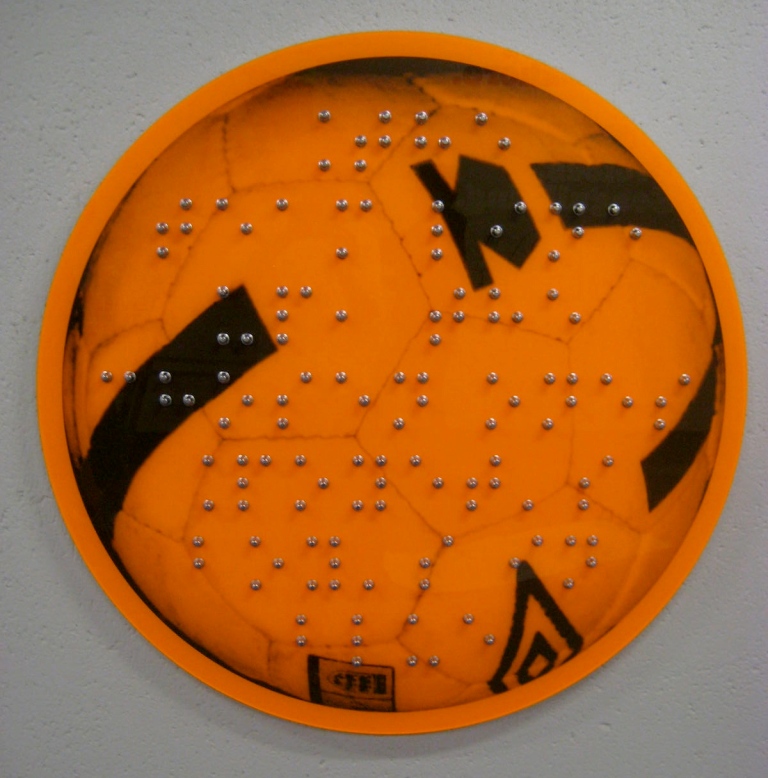By David Gold
August 3 – A new way of utilising space inside football stadiums, pioneered by Championship side Brighton and Hove Albion, could influence the design of venues used at the 2014 FIFA World Cup in Brazil, if Phil Nutley has his way.
Nutley is the founder of Corridor, a social design agency that works with communities across the public, private and third sectors, and has created 70 bespoke pieces of art and design for the club’s Amex Stadium.
This simple measure appears to have had an effect in curbing the misbehaviour of football fans at the Brighton ground.
The installation of the artwork (pictured top and below) was carried out after Nutley and his team put their vision to Richard Hebberd, the director of operations at the Amex stadium, who gave them the go ahead to work on the east and north stand concourses.
So successful has the initiative been that they will be expanding the artwork in the stadium as the capacity of the ground is increased this summer.
“We wanted to see if we could use our design skills to create a really engaging set of social projects,” Nutley told insideworldfootball.
“To amplify what it says on the outside of the tin – it is called a community stadium so let’s use the community as our creative team.”
Using 150 people from across Brighton and Hove, they created the artwork with help from children as young as five to grandparents in their 70s, even drawing on the help of former Match of the Day presenter Des Lynam, a Brighton fan.

Among the others involved was a man whose mother had owned one of the first women’s season tickets to watch the south coast club back in 1902.
“There has been no vandalism to any of the artwork and that obviously comes down to self ownership,” said Nutley.
Hebberd added: “If you treat the fans with respect, they will do the same with you and your stadium.”
“We have done a number of things that are different in terms of football stadiums,” he said.
“One component is making it softer, the walls are painted and rendered, there are tables and chairs, they are better lit and the art is a very important part of that.
“It created the environment in which people feel it is incumbent on them to behave.
“Fan behaviour has been much better.”
With around 15,000 fans often in the vicinity an hour before kick-off, and football supporters’ notorious reputation for troublemaking, that is an achievement.
The only issue Brighton have had so far was with away fans at a match against Portsmouth, their local rivals.
“Allowing the community to turn the concourses into a local modern art museum has had a good effect on behaviour,” said Nutley.

“[The exhibition] is very much an integral part of the history and heritage of the club.”
The club is now being used as an example to others who are looking to build a new stadium, with Liverpool among those who have visited the Amex (pictured above) to see Corridor’s work.
“We are creating a pilot of how football stadia could and should be more engaging with its fans and communities across Britain,” said Nutley.
Nutley’s ambitions to take these ideas further even stretches to Brazil, the spiritual home of the game and who are hosting the next World Cup in 2014.
South Africa is another place Nutley said the project could work in.
Contact the writer of this story at zib.l1744470142labto1744470142ofdlr1744470142owedi1744470142sni@d1744470142log.d1744470142ivad1744470142

